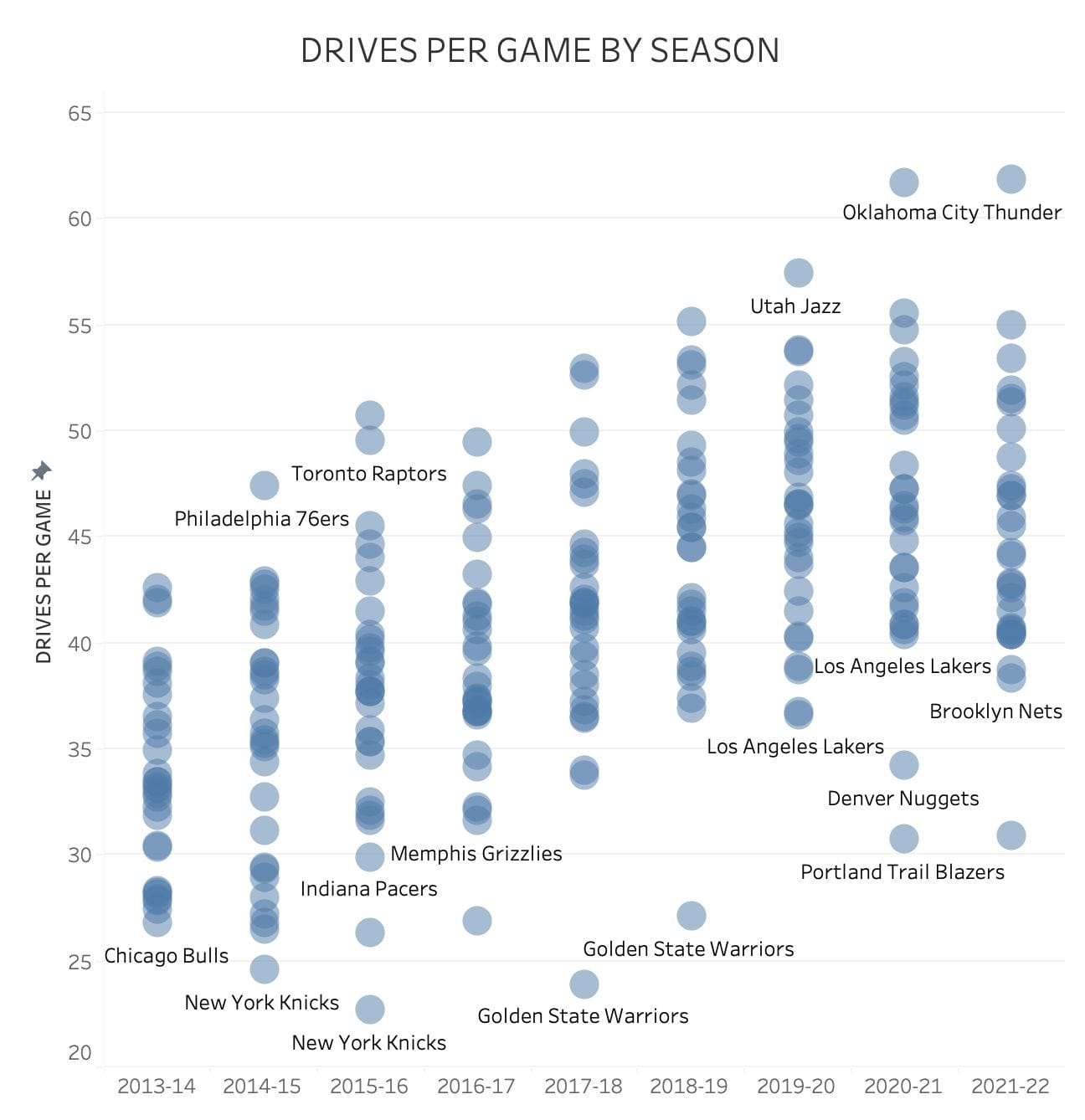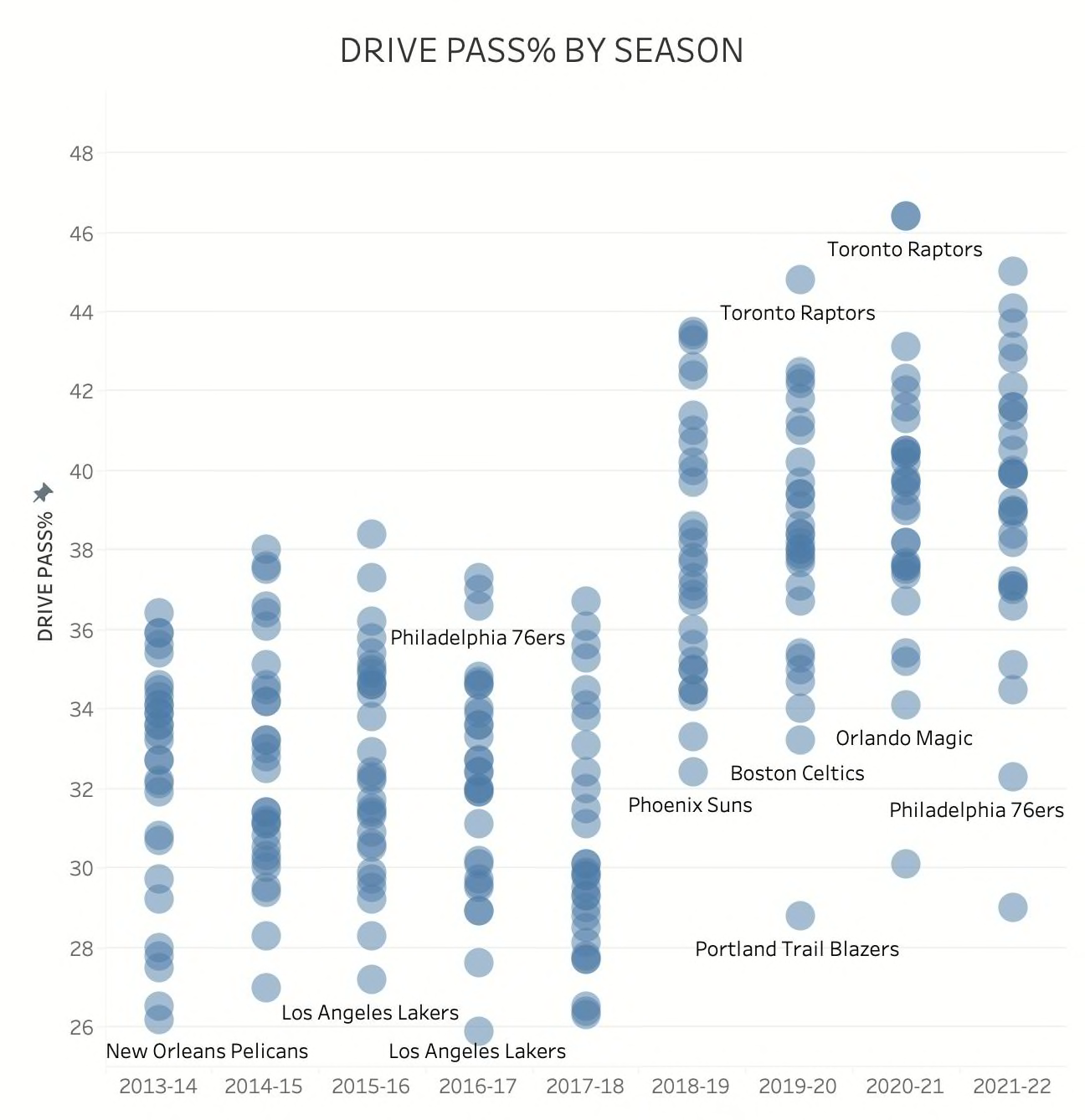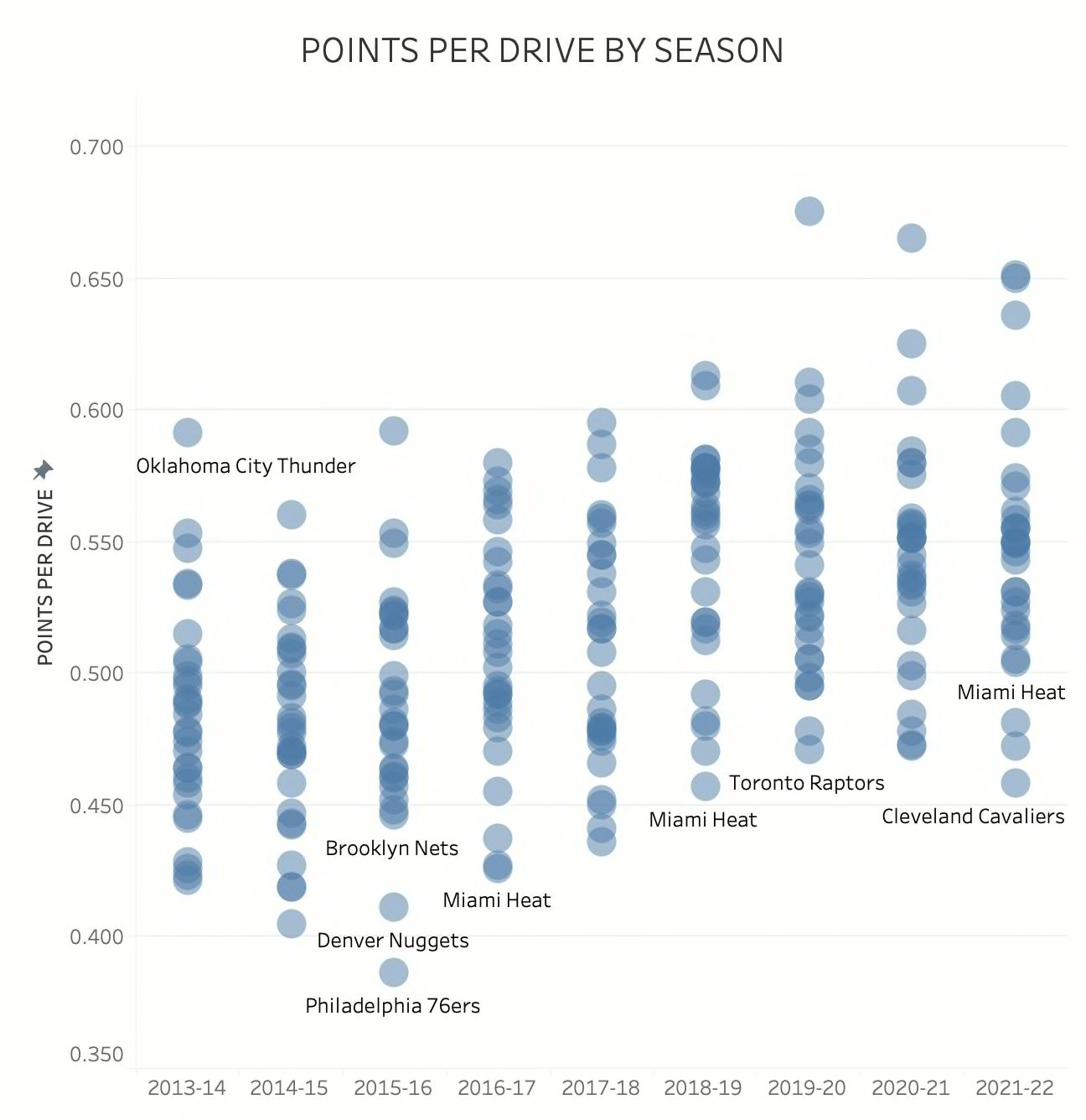The Whiteboard is The Step Back’s daily basketball newsletter, covering the NBA, WNBA and more. Subscribe here to get it delivered to you via email each morning.
On the surface, the most obvious link between the 60-point games for Karl-Anthony Towns and Kyrie Irving this week was their 3-point shooting — 7-of-11 for Towns, 8-of-12 for Irving. But both players also did plenty of work off the dribble.
Against the Orlando Magic, Irving scored 18 points on 13 drives, shooting 6-of-7 from the field and 4-of-4 from the free-throw line. Towns, a 7-footer, finished with 21 points on 17 drives, shooting 7-of-10 from the field and 6-of-6 on free throws. These are just two eye-popping examples of what’s been a season-long trend towards more players attacking off the dribble.
Last year we profiled Shai Gilgeous-Alexander who was, at that time, averaging 25.1 drives per game, the highest mark since optical tracking data first made the stat available for the 2013-14 season. This season he’s at 23.9 ,but we also have Luka Doncic (22.0) and Ja Morant (20.9) averaging more drives per game than anyone other than Gilgeous-Alexander since the stat began being tracked.
Drives (any play where a player catches the ball at least 20 feet from the basket and dribbles to within 10 feet of the basket) aren’t just increasing for a few outlier ball-handlers. Over the past nine seasons, we’ve seen team drive totals steadily increasing.

The Nuggets are an enormous outlier this season at just 30.9 drives per game, a mark which can be explained, in large part, by the excellence of Nikola Jokic is a shot creator from the post and the elbow, meaning their guards and wings don’t need to attack the basket as often with the ball in their hands. But the Brooklyn Nets, who rank 29th with 38.3 drives per game this season, would have ranked seventh in the league in 2013-14.
NBA teams driving more often is part of a larger offensive shift
It’s not entirely clear from the numbers whether the change is because of a specific intention to drive more, or because of an intention to reduce to other modes of attack, leading to a natural increase in drives. Fewer and fewer static post-ups could be part of this pattern but that was a trend that was already well underway before 2013-14 and can’t entirely explain the sharp increase here.
One likely culprit is an intentional reduction in the number of mid-range pull-ups. Each team is, on average, taking about one fewer pull-up 2-pointer per game this season, compared to 2013-14. But, as with everything else, there is a range. This year, just nine teams are averaging at least 15.0 pull-up 2-pointers per game. In 2013-14, there were 13. So the likely explanation is a mix of changing offensive values, both explicit and implicit, and the ramifications are just as myriad.
One of the other accompanying changes has been that the league, as a whole, is passing much more often out of drives.

The sharp split between the 2017-18 and 2018-19 season indicates that there may have been some change in how this stat was calculated by the NBA’s optical tracking system but if we assume these numbers are merely mostly reflecting a multi-year trend it’s still dramatic. In 2013-14, the Atlanta Hawks passed on 36.4 percent of their drives, the most in the league. That mark would rank 27th in the league this season.
This is one of the reasons we’re seeing a lot more catch-and-shoot 3s and similar potential assist numbers, league-wide, even though raw passes per game marks for teams have been declining. The other upshot is that teams have actually become more efficient scoring off drives. Even though they’re doing it more often, finishing may be improving and the increase in passes off drives could reflect a more selective mindset about when to shoot and when to pass in the lane.

All of these evolutions — more 3-pointers, fewer post-ups, fewer mid-range jumpers — are related. But while they’re often accompanied by hand-wringing over what we’re losing, the dying arts of the post-up and mid-range games, it’s worth celebrating that we’re getting a game with more movement and more off-the-dribble craft than ever before.
Other NBA stories:
Devonte’ Graham was a big offseason addition for the Pelicans but CJ McCollum has made some of his skills redundant and he could be their only significant trade chip this summer.
The Ringer’s NBA Draft Guide is live. For the old folks like me, it’s fine to see prospects from this year compared to old cult favorites like Devin Harris, Evan Turner, Ed Davis, Matt Barnes, J.J. Barea and DeJuan Blair.
What if the Lakers had traded for Buddy Hield instead of Russell Westbrook?
After a strong season, the Warriors find themselves in the envious position of having to cut some productive players from their playoff rotation. Who will be in and who will be out?
It’s time to start taking the Minnesota Timberwolves seriously.
Looking for more good stuff to read? Sign-up for email newsletter service The Sample. You set your interests (sports, politics, science and more) and every day they’ll send you one edition of a new email newsletter to try. If you like it, subscribe with a single click. If you don’t, delete and you’ll never see that one again. Best of all, for every person who tries the sample through the referral link above, The Sample will help a new subscriber find their way to The Whiteboard.